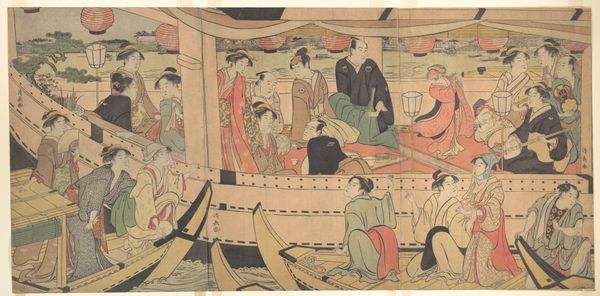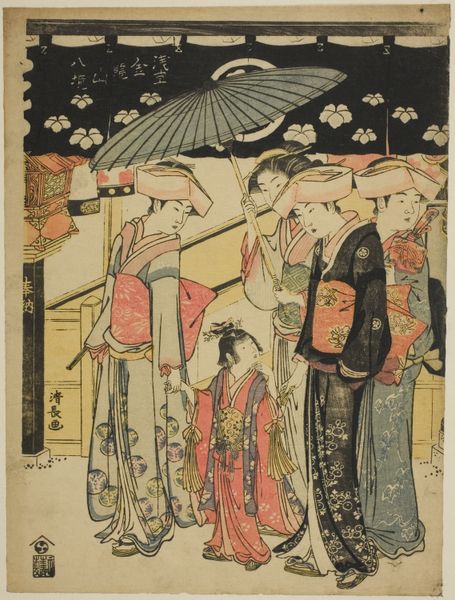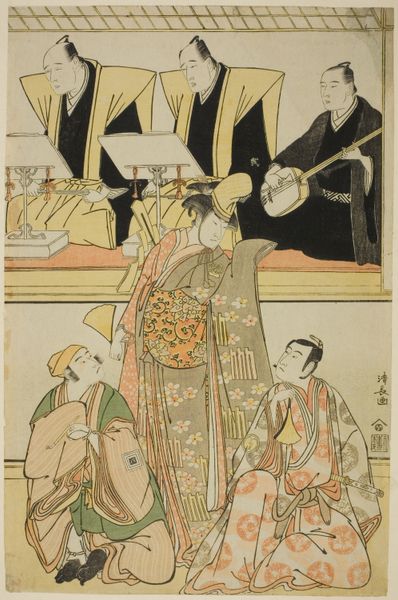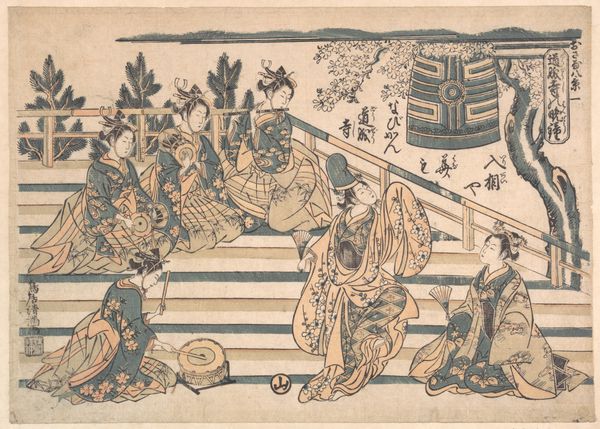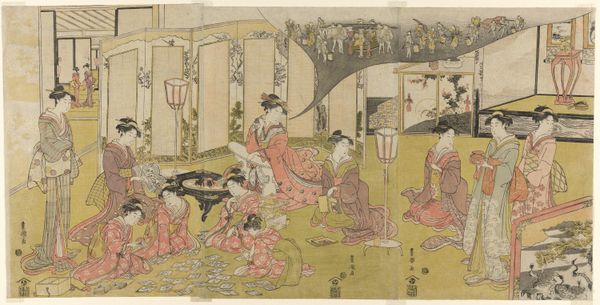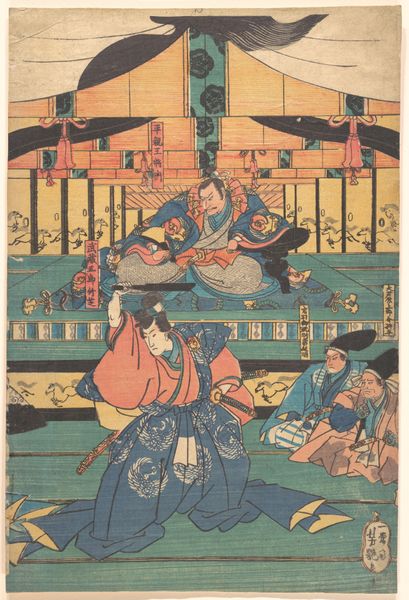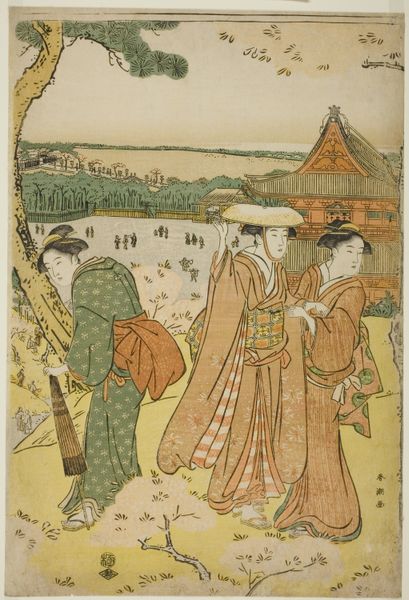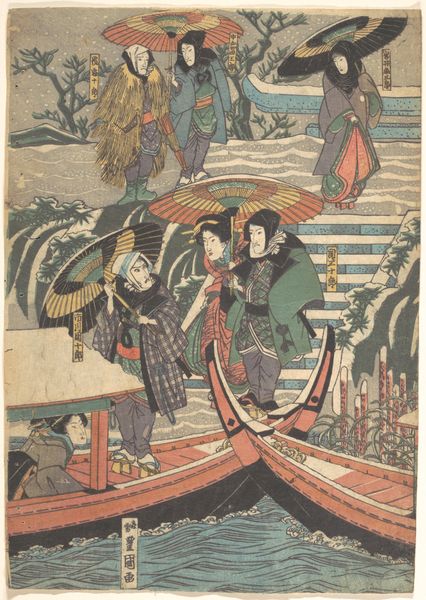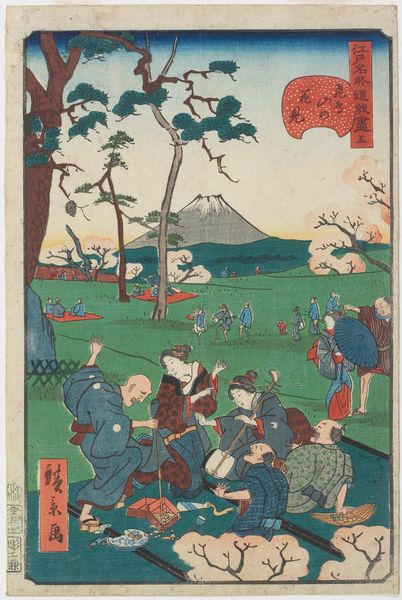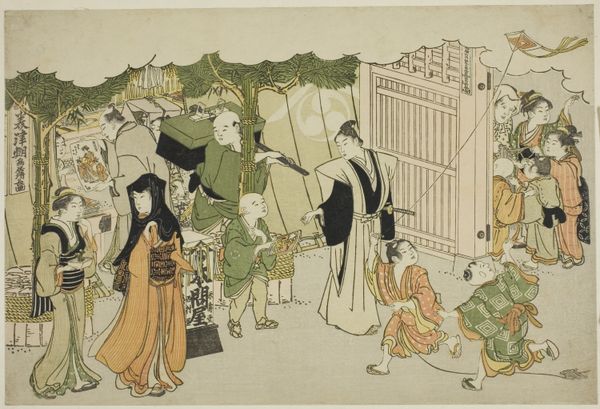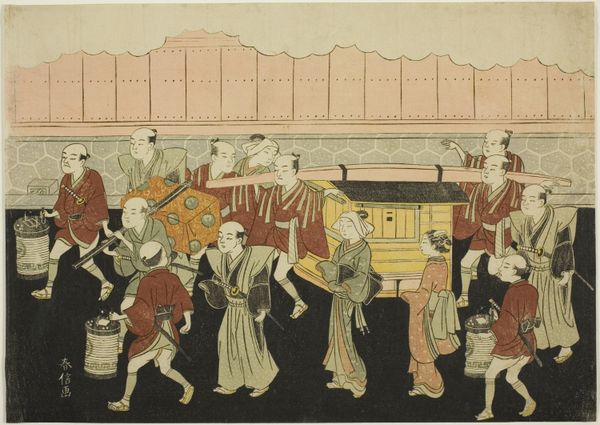
print, ink
# print
#
landscape
#
ukiyo-e
#
ink
#
genre-painting
Dimensions: 15 1/2 x 10 1/8 in. (39.3 x 25.7 cm) (sheet)
Copyright: Public Domain
Curator: The electric energy radiating from the page immediately captures my attention! I’m drawn to the dark blues and pale pinks. Editor: Agreed. Today we’re looking at Katsukawa Shunko’s circa 1807 woodblock print entitled "(Fireworks at a Summer Festival)" currently in the collection of the Minneapolis Institute of Art. We should note it’s a lovely example of ukiyo-e, rendered in ink and color on paper. Curator: Right, and as such, we should look to unpack what social and cultural factors influenced Shunko. I would ask: who had access to view this type of image? Editor: Good question. These prints were produced and consumed by the merchant class in the Edo period, not typically the warrior or aristocratic classes. The subject matter in particular, everyday urban life and leisure, reveals a great deal. Curator: Ukiyo-e literally means "pictures of the floating world" right? Which gestures toward an acceptance of, maybe even indulgence in, pleasure and spectacle? Note that it seems a mixed crowd represented in the print: there is at least one possible geisha or courtesan amongst many other figures of indeterminable status. The emphasis on leisure asks: Whose pleasure? At whose expense? Who is represented and how? Editor: Precisely! Consider the role of the artist in reflecting this dynamic society, both depicting and perhaps also shaping social trends. Shunko presents an urban celebration: the collective experience, made possible through complex social arrangements. One can sense the excitement, but I am mindful of whose experiences were likely left outside this frame, who perhaps bore the true expense, as you said, of this pleasurable "floating world." Curator: Right—I am aware that the glittering surfaces of ukiyo-e prints often mask complex histories of gendered and racial labor, as well as resource extraction, all necessary for producing the fleeting moments of pleasure represented here. Perhaps this consideration of power and representation encourages us to understand these historical dynamics so we can strive towards a different kind of present. Editor: Perhaps we could close by acknowledging that while this print certainly captures a sense of celebratory collective enjoyment of a shared spectacle, it simultaneously speaks to a time when these spaces weren’t fully shared and when social and economic factors often dictated who was enjoying these freedoms.
